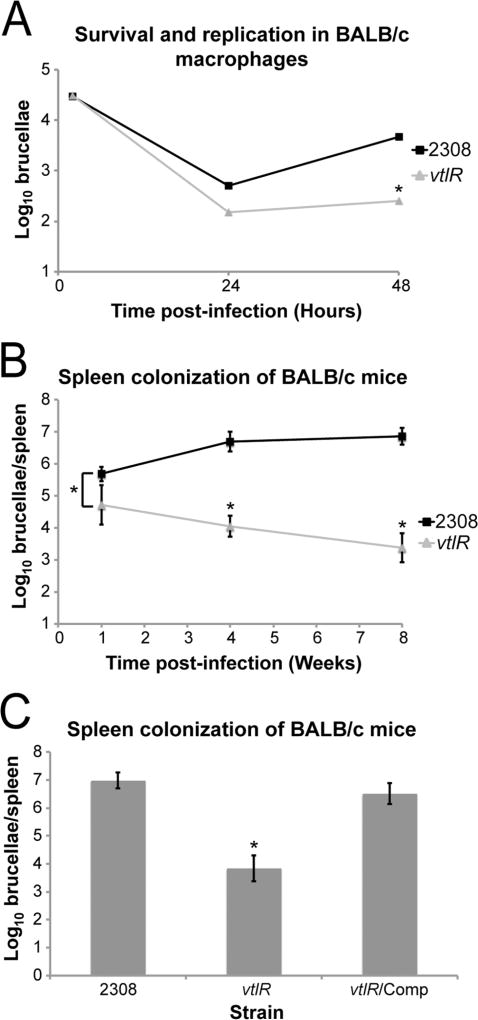Fig. 2.
VtlR is essential for virulence of Brucella abortus 2308. A. Survival and replication of the B. abortus ΔvtlR mutant in primary murine macrophages. Primary macrophages were collected from the peritoneal cavity of female BALB/c mice and infected with the parental B. abortus strain 2308 or the ΔvtlR mutant strain. At 2, 24 and 48 h post-infection, macrophages were lysed, and serial dilutions of the lysates were plated on blood agar to determine the number of intracellular brucellae. Statistically significant differences (one-way ANOVA; P < 0.005) are indicated by an asterisk (*).
B. Spleen colonization of BALB/c mice infected with the B. abortus ΔvtlR mutant strain. Six week old female BALB/c mice were infected intraperitoneally with B. abortus 2308 or the ΔvtlR mutant strain. Five mice were used for each Brucella strain at each time point. At 1, 4 and 8 weeks post-infection, mice were sacrificed, and the spleens were removed and homogenized. Serial dilutions of the spleen homogenates were plated onto blood agar to enumerate the number of brucellae per spleen. Data are presented as average brucellae per spleen +/− the standard deviation from the five mice infected with each Brucella strain. Statistically significant differences (t-test; P < 0.05) are indicated by an asterisk (*).
C. Spleen colonization of BALB/c mice infection with the reconstructed ΔvtlR mutant strain (ΔvtlR/Comp). This experiment was performed as described above in Fig. 2B except spleen colonization was evaluated after a single time-point of 4 weeks post-infection. Data is presented as average brucellae per spleen +/− the standard deviation from the five mice infected with each Brucella strain. Statistically significant differences (t-test; P < 0.05) are indicated by an asterisk (*).

